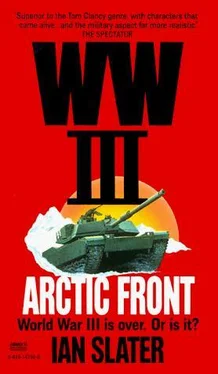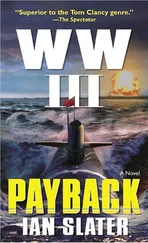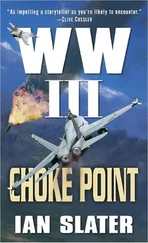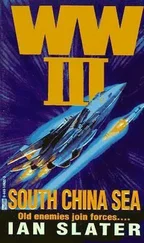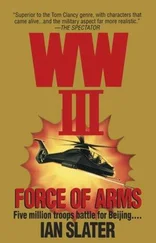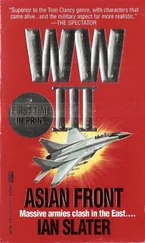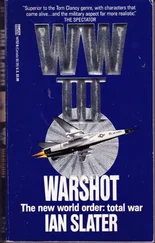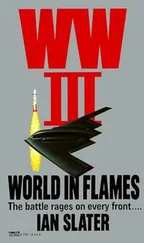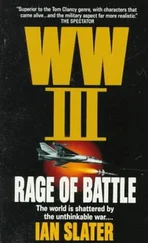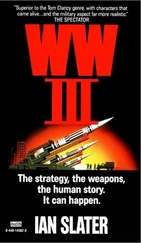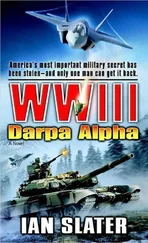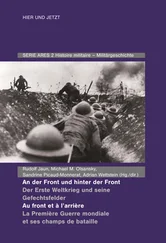“Damn it!” said Burke, so softly not even the radar operator nearby heard it. “Patrol boats. Flares all quarters.”
“Flares all quarters, sir!” responded the OOD, and within seconds they had messages, confirming Burke’s suspicion, streaming in from every part of the fleet. There were swarms of patrol boats — foil-borne — reports of them closing difficult to hear above the cacophony erupting beyond the island of calm that was the USS Acheson’s TFCC — the sound of missiles, massed machine-gun and “pom-pom” AA fire reaching crescendos that drowned the men’s voices.
“Forty plus,” the OOD reported to Burke, the OOD suddenly thrusting his headset away from him, the crash of a missile hitting one of the American destroyers so loud he was deafened for several seconds and immediately ordered off the bridge, replaced by one Capt. Elias Wilkes, junior, a man whose career, although he had not come up through Annapolis, was about to take off. Realizing they were under close-quarter attack, Wilkes now hypothesized why the Siberian fleet had uncharacteristically “retreated” and why the subs, no doubt lying quiet, props stilled, had thus denied the U.S. passive-mode sonar their position. Suddenly he knew why they hadn’t turned.
“Mines, sir,” Wilkes told Burke.
Burke tried to suppress his alarm. Mines in choke points throughout the world — that was standard drill. Egress points, like La Perouse between Sakhalin and Japan, were no doubt already mined by the Siberians. This was understood. The U.S. and their allies — all the world’s navies — had long prepared their own egress channels for the defense of last resort. But here— hundreds of miles out from the nearest landfall of the Kuril Islands, an area well mapped and frequently patrolled by NATO’s navies? If Wilkes was right — though the small patrol boats couldn’t have done it, given their already-crowded decks-it certainly would explain the turning about of the fleet, suggesting that the mines had just been laid ahead of the Siberians. But no mine layers had been reported by SAT intelligence.
“The subs have been seeding them,” said Wilkes.
“What?”
“Subs laid them, sir. Thousands of AMD one-thousands. The subs can’t lay the AMD five-hundred.” Wilkes’s head inclined quizzically. “Strange that the lighter mine is more difficult for the sub. Probably the shape of its—”
“How does the AMD work?” Burke shot back. It was no time to pretend you knew everything. “What’s the trigger? Magnetic? Acoustic? Pressure?” He understood why magnetic wouldn’t get the hydrofoils, the latter consisting of plastic composites and the engine would be too far above the air/sea interface to trigger an acoustic mine. That left only pressure. But Wilkes shook his head.
“Pressure mine self-releases when the water column above it changes, but these hydrofoils probably don’t spread their weight over a wide enough area,” proffered Wilkes.
Wilkes’s guess was wrong. He’d told the truth in part — that the pressure from the hydrofoil wouldn’t set some of them off, though three of the fast-weaving attack boats had been sunk by others in the flotilla in the melee of the wake-streaked sea. Few men had a chance to notice the phytoplankton lit up even more beautifully by the intertwining tracer, flare light, missile explosions, and exhaust glare.
What had actually happened was that the foil-borne craft had sped through a protective channel, no more than half a mile wide, ahead of their fleet and the Tattletale, then spread out in a trumpet-shaped fountain, like angry wasps emerging from the safe, narrow channel left by the mine-laying subs. Meanwhile the subs waited in their silence should the American task force find the channel by sheer luck. The Siberians and Burke knew the chance of doing this was one in a million.
“Turn about!” Burke ordered. He had no choice, though he knew the enemy would later make great capital from the fact that the American Seventh Fleet, for the first time in its history, had turned tail and run. But to stop would imperil his ships even more, making them stationary targets for the missiles already being fired by five Forgers who had dived through under cover of an arrowhead formation of Fulcrums.
* * *
In running Burke had bought himself valuable time and fought off the foil-borne attack craft, sinking twenty-three. Another two of them were victims of their own missile fire; another was blown out of the water by an American Adams class destroyer. Even so, one of the U.S.’s Wasp class LHAs, an amphibious landing helicopter assault ship a quarter-mile to the right of Freeman’s, was hit. Despite the pumps working overtime, the forty-two-thousand-ton vessel was reduced to three knots, with Marines and seamen working like navvies, the smell of their sweat mixing with the burning odors of battle as they strove to shift cargo from port to starboard to even the ship’s trim before the pumps, already overheating because of “spare uniform” clogged intakes, gave up the ghost.
Watching the scene through his infrared field glasses aboard the Davis, Freeman said nothing. This was the navy’s department, and he was too astute a commander not to know when to keep quiet. But Norton could tell the general was worried — as worried as he’d ever seen him. If the Siberians tried hard enough to stop the American force here, how much worse would it be when you tried to land on their soil and with the element of naval surprise completely lost? Two Forgers appeared, white shimmers in the rolling green sea of infrared.
“Inside!” yelled Freeman. “Quickly!”
Freeman saw one Forger disintegrate, the flash of a Tomcat— or was it a Strike Eagle? — streaking by, the Forger dropping toward the Davis, its “ODD Rods”—friend or foe identification antennae forward of the armored glass windscreen — glinting momentarily in the darkness, its Tumansky turbojet screaming in a seventeen-thousand-pound reverse thrust, its twin-barreled cannon spitting red tracer, before it crashed into the sea, the slap followed by a soft explosion of phosphorescent seawater that now fell like rain. But in diverting the U.S. task force away from the Kuril landing sites, the Siberian fleet only succeeded in forcing Freeman to shift the axis of his invasion force away from the Kurils south to the Sea of Japan for the main landing.
Khabarovsk
Beneath the picture of the scantily clad Georgian beauty in the Khabarovsk reading room the standby Klaxon blared. The Siberian pilots, including Sergei Marchenko, looked up at the computer screen and saw a cluster of X’s — enemy fighters and bombers rising up from Wakkanai out of Japan’s northernmost island, Hokkaido, 370 miles east-southeast. Too far for their Fulcrums to intercept and have enough fuel to return safely. The fighters out of Cape Krilon on Sakhalin Island’s southernmost tip would have to engage, but if the enemy got across the Tatarskiy Strait between Sakhalin and the mainland, the Khabarovsk wing would have to go up.
“We should have hit Japan with H-bombs on day one,” Marchenko’s wingman said. He knew he was talking rubbish — any nuclear exchange would be suicidal — the irony being that both sides had to fight the biggest conventional war in history. But the wingman was afraid. The American air force, though it could never win the war by itself against an enormous power like Siberia, over ten times the size of Iraq, had nevertheless already penetrated Siberia’s outer, Kuril/Sakhalin defenses. The best Siberia could hope for in the air was to slow them down, knowing that the truly decisive battles would be on the ground-across the vastness of Siberian mountains, taiga, and tundra.
Читать дальше
